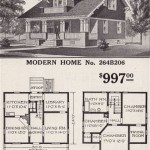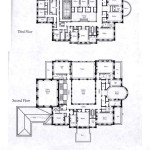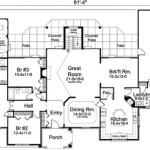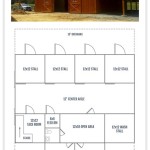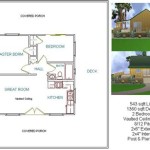House Plans To Build In Phases
Building a home is a significant financial and logistical undertaking. For many individuals and families, the dream of owning a custom-built home may seem out of reach due to the perceived cost. However, a practical approach to building a home in phases can transform this dream into a tangible reality. Phase construction allows homeowners to build their homes incrementally, spreading the financial burden over time and tailoring the process to their budget and needs.
Benefits of Building a House in Phases
Building a house in phases offers several advantages, particularly for those with limited financial resources or those seeking a flexible and customizable construction experience. The primary benefits include:
- Financial Flexibility: Phase construction allows homeowners to spread the costs of building a home over a longer period, minimizing the upfront financial commitment and making it more manageable. This approach is particularly beneficial for individuals or families with limited savings or those who want to avoid taking on significant debt.
- Customizability and Flexibility: Building a house in phases provides homeowners with the flexibility to adapt and customize the home as their needs evolve. They can start with essential elements like the foundation and shell and gradually add features and rooms as their budget permits. This approach allows for greater flexibility in design and allows for adjustments based on changing circumstances, such as a growing family or lifestyle changes.
- Reduced Risk: Phase construction allows homeowners to monitor the progress of their construction and make informed decisions regarding potential changes or modifications. This process helps minimize the risk of costly errors or unanticipated expenses that can often arise during a single-phase construction project. By focusing on smaller segments of the build, homeowners can carefully review each stage before proceeding to the next, ensuring that the final result aligns with their vision and budget.
Planning and Considerations for Phase Construction
While building a house in phases offers numerous advantages, it requires careful planning and coordination to ensure a smooth and successful construction process.
- Develop a Detailed Construction Plan: Before embarking on phase construction, creating a comprehensive plan that outlines each phase, the scope of work for each stage, and the estimated budget is crucial. This plan serves as a roadmap, providing clarity and direction throughout the construction process. It should include a detailed timeline for each phase and a clear understanding of the expected costs and materials required. This plan can serve as a valuable communication tool between the homeowner, builder, and subcontractors. It can also help to ensure that the construction remains on track and within budget.
- Establish a Clear Budget Allocation: A clear and realistic budget for each phase is essential. It should account for all costs, including labor, materials, permits, and any potential contingencies. This approach helps homeowners prioritize investments and avoid exceeding budget constraints. Carefully consider the essential elements for each phase and allocate funds accordingly. This approach ensures that the construction proceeds in a manageable and financially responsible manner.
- Coordinate with Contractors and Subcontractors: Coordinating with contractors and subcontractors is vital for a seamless transition between phases. Effective communication and collaboration are essential to avoid delays and ensure a smooth flow of work between stages. Clearly define the scope of work for each phase and ensure contractual agreements are in place for each contractor or subcontractor involved in the project. This approach ensures that everyone involved in the construction process is aware of their responsibilities and expectations. It also helps to minimize the risk of disagreements or misunderstandings, leading to a more efficient and less stressful construction process.
- Seek Professional Advice: Consulting with an architect or experienced builder who specializes in phase construction is highly recommended. They can offer valuable insights, guidance on design considerations, and ensure that the structural integrity of the home is maintained throughout the various stages of construction. Their expertise can help homeowners navigate the complexities of building a home incrementally, ensuring that each phase is executed correctly and efficiently. They can also provide valuable advice on building codes, zoning regulations, and best practices for phase construction.
Phase Construction Strategies
Phase construction offers a flexible approach to building a home. There are various strategies homeowners can employ depending on their budget, needs, and the desired home design. Some examples of common phase construction strategies include:
- Foundation and Shell: The first phase typically involves building the foundation and external shell of the home. This phase includes laying the foundation, constructing the walls, and installing the roof. This provides a solid base for subsequent phases and enables the homeowner to move in once the shell is complete. Depending on the climate, homeowners may consider enclosing the shell for temporary occupancy until the subsequent phases are completed.
- Interior Finishes: The second phase often focuses on interior finishes, including plumbing, electrical, HVAC, and drywall installation. The homeowner can then choose the fixtures and materials that best suit their preferences and budget. This phase can be further divided into stages, allowing homeowners to prioritize essential finishes, such as the kitchen and bathrooms, while completing other areas gradually.
- Exterior Finishes: The final phase often involves the exterior of the home, such as siding, windows, doors, landscaping, and driveway installation. This phase provides a final touch to the home's aesthetics and improves its curb appeal. It can be completed gradually, giving homeowners the flexibility to adapt the exterior design to their evolving preferences or budget.
Building a house in phases can be a rewarding experience, offering homeowners the chance to create a customized and affordable home that aligns with their financial capabilities and evolving needs. By carefully planning, coordinating, and seeking professional advice, homeowners can make their dream of homeownership a tangible reality, one phase at a time.

Build In Stages Small House Plan Bs 1084 1660 Ad Sq Ft Expandable To Sf Plans Craftsman Style

Cape Cod House Plans For A Small Home Built In Two Phases

Home Plan To Build In Stages 55166br Architectural Designs House Plans

Small Build In Stages House Plan Bs 1275 1595 Ad Sq Ft Expandable To Square Feet

Home Plan To Build In Stages 55166br Architectural Designs House Plans

Hugedomains Com House Plans Building A With S

Small Build In Stages House Plan Bs 1275 1595 Ad Sq Ft Expandable To Square Feet

How To Build A House In Phases Daily Monitor Building Three Bedroom Plan Plans

How To Build A Three Bedroom House In Two Phases

5 Stages Of Remodeling The House Designers


